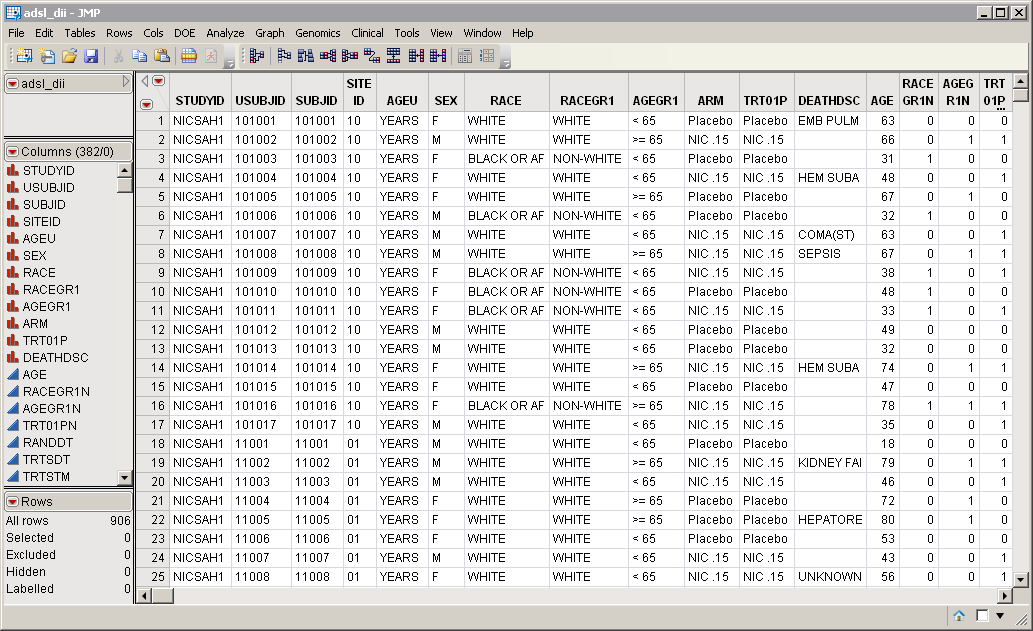Ridge regression is a form of regularized
regression
that allows for numerous, potentially correlated,
predictors
and shrinks them using a common
variance
component model. The process computes Best Linear Unbiased Predictions (BLUPs) of the responses based on this
mixed model
. Computations are performed using SAS/STAT PROC MIXED.
Refer to the
SAS PROC MIXED documentation
for more information.
As always, it is not easy to tell beforehand which
predictive model
best fits your data. You should, therefore, plan to run your data through several, if not all, of the predictive models to find out which
model
works best. The
Cross Validation Model Comparison
process is especially useful for this task. See
Cross Validation Model Comparison
for more details.
One
wide
Input Data Set
is needed to run this process. This data set contains all of the numeric and other data to be analyzed. Data must be in the
wide
format. Genetic marker data is likely in this form already, but any clinical data that are in
tall
form must be converted to the
wide
format. The
Transpose Rectangular
process can be used to convert the
tall
data set and its accompanying
Experimental Design Data Set (EDDS)
to
wide
form.
The
adsl_dii.sas7bdat
data set, used in the following example, consists of 906 rows of individuals with 382 columns corresponding to data on these individuals. It was generated from the original nicardipine
ADSL
data set described in
Nicardipine
and is included with JMP Clinical
. This data set is partially shown
below
.
For detailed information about the files and data sets used or created by JMP Life Sciences software, see
Files and Data Sets
.
The output generated by this process is summarized in a Tabbed report. Refer to the
Ridge Regression
output documentation for detailed descriptions and guides to interpreting your results.
